Back from the abyss: These are the animal species that resurfaced in 2019 after they were feared lost
Species are being lost at an estimated 1,000 times the background rate.
Humanity has grown accustomed to bidding farewell to species of animals as time goes on. Climate changes and conditions are no longer ideal for them to thrive.
In the last decade alone, the world has said goodbye to the west African black rhinoceros, the Pinta Island tortoise and multiple species of reed-warbler birds.
While extinction is a natural phenomenon, scientists estimate that species are being lost at up to 1,000 times the background rate, with dozens disappearing every day, according to the Center for Biological Diversity.
However, multiple animals thought to be lost for good have resurfaced this year to the delight of biologists and animal lovers alike.
Here are the animals that scientists rediscovered in 2019:
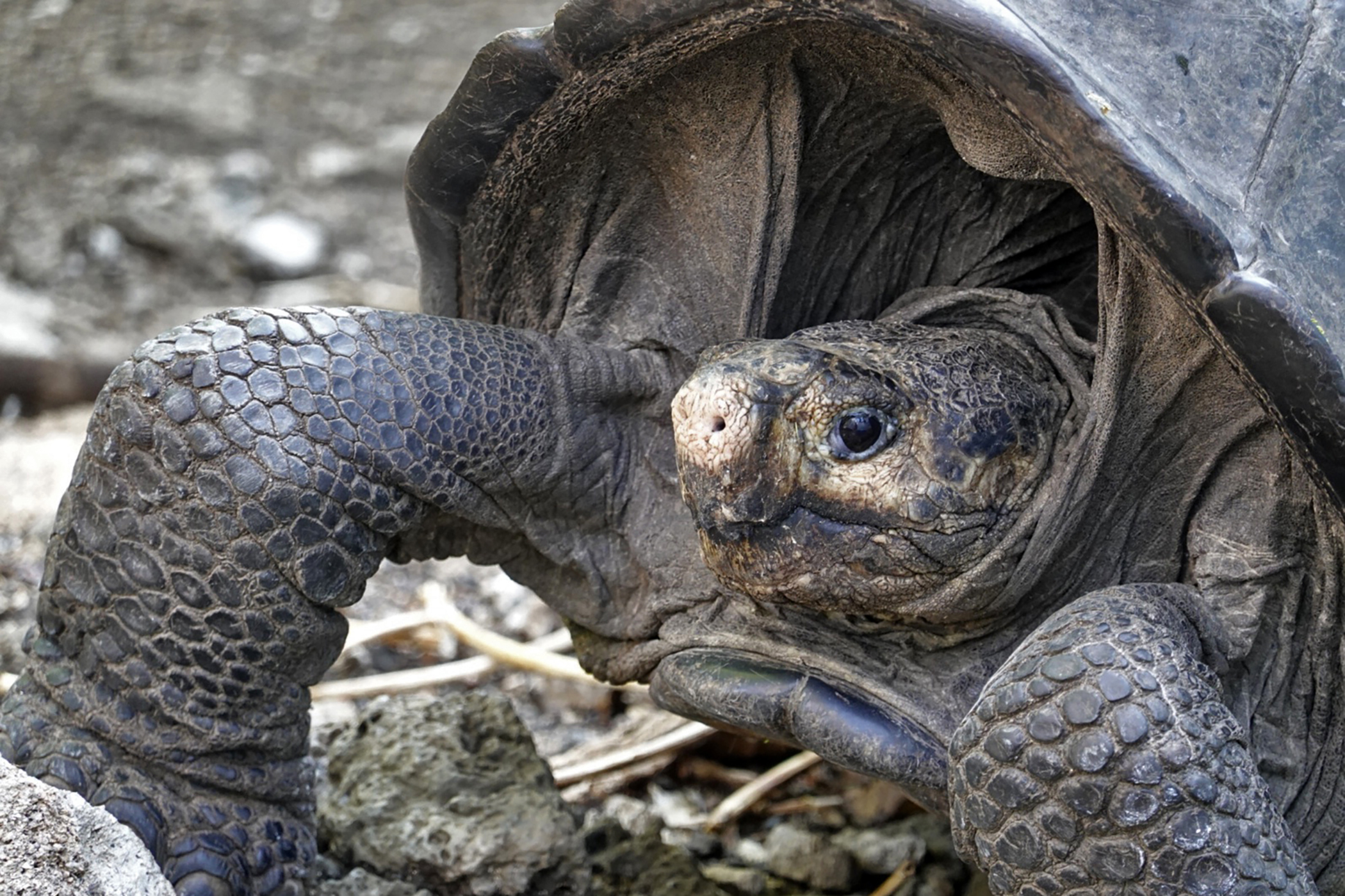
Fernandina giant tortoise
A female adult Chelonoidis phantasticus, a tortoise found on Fernandina Island in the Galapagos, was the first of its species seen in about 112 years.
The Galapagos Conservancy, a Fairfax, Virginia-based organization dedicated to the long-term protection of the Galapagos Islands, made the "monumental finding" in February during a joint expedition with the Galapagos National Park.
The tortoise is believed to be more than 100 years old and was taken to a breeding center for giant tortoises on Santa Cruz Island. Experts believe more of the species may be on the island due to findings of tracks and scat.
Before the finding, the website The Search for Lost Species alluded the species may be "holding on" after tortoise droppings were found during an expedition on the remote island in 1964 and again in 2009 after people on board the aircraft reported sightings of "something tortoise-like from the air."
The species of tortoise is listed as critically endangered on the International Union for Conservation of Nature Red List of Threatened Species.
The only other living member of the species was found in 1906, according to the IUCN.
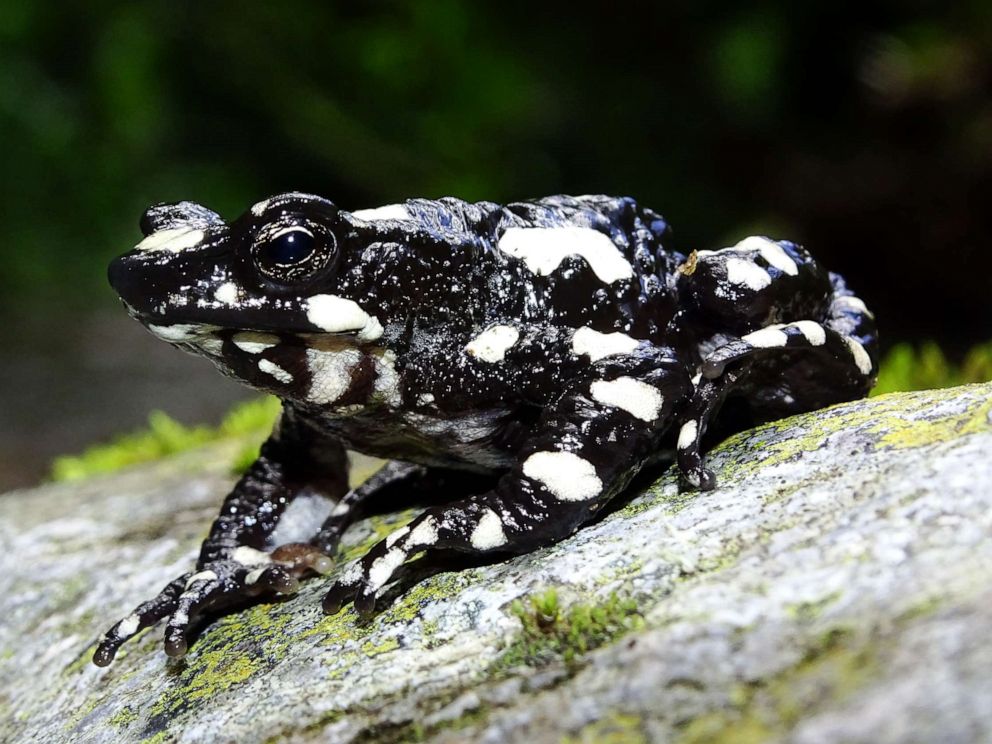
"Starry Night" harlequin toad
Biologists documented the "Starry Night" harlequin toad, which had been lost to scientists since 1991, in the Sierra Nevada de Santa Marta mountain range in Colombia in April. The species had been largely wiped out by a deadly fungal pathogen.
The re-discovery was made possible by a partnership between the Global Wildlife Conservation, Colombian NGO Fundación Atelopus and the indigenous Arhuaco people of the Sogrome community after four years of negotiations, who later allowed researchers to take photos after they determined they "genuinely" shared the community's interest in protecting the Sierra Nevada range.
The toad, characterized by its black and white spots, is called "gouna" by the Arhuaco people, who consider them guardians of water and symbols of fertility and an inspiration to the Sogrome's ancestral culture.
Biologists expected to find one individual toad but came across a population of about 30 instead.
The harlequin toad is classified as critically endangered on IUCN's Red List.
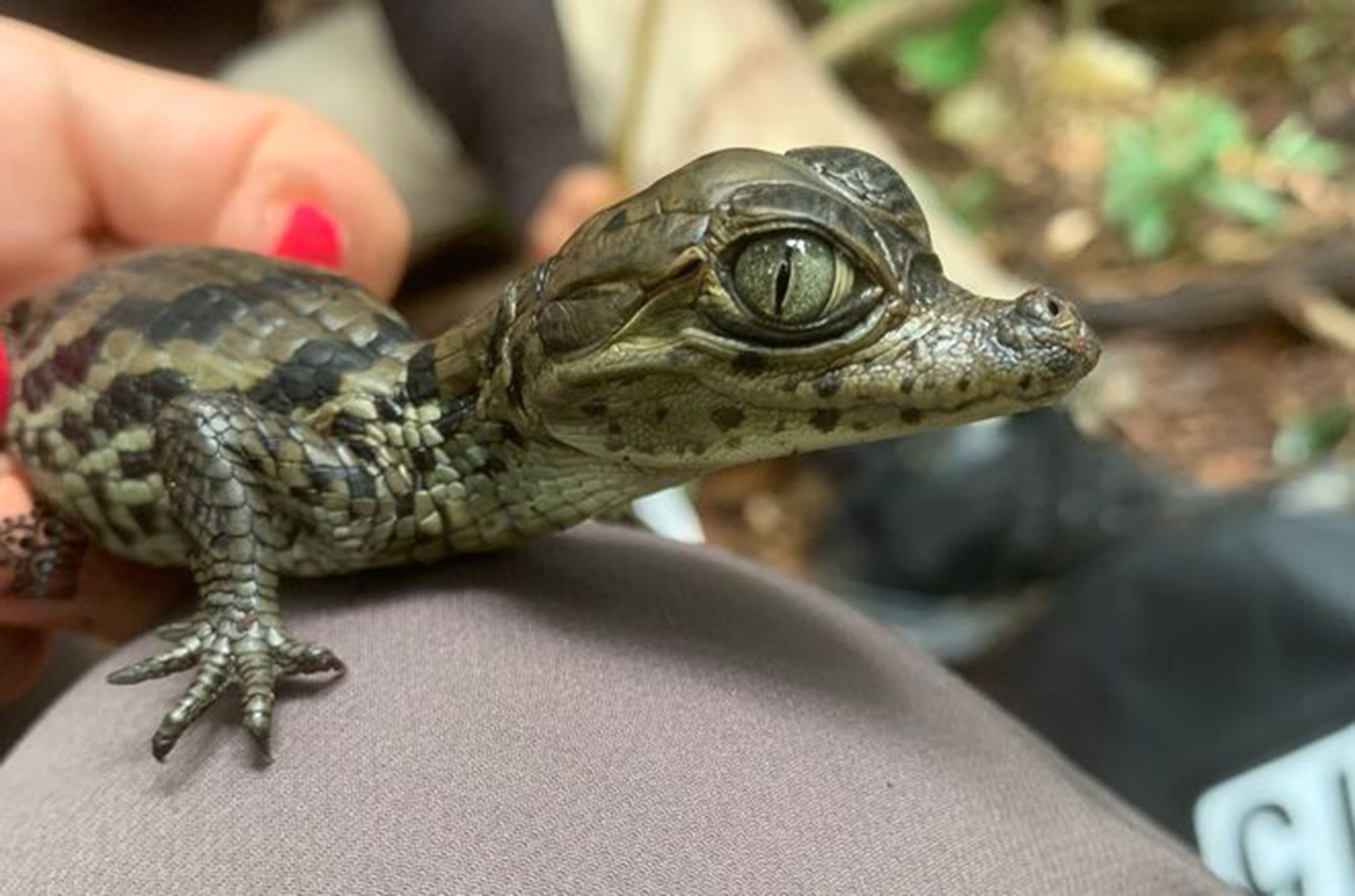
Rio Apaporis caiman
The Rio Apaporis caiman, a subspecies of the Spectacled caiman, are typically found in southern Colombia and resurfaced in 2019 after being lost to the scientific community since 1952, according to the Global Wildlife Conservation.
Biologist Sergio Balaguera-Reina began a "grueling" expedition in December 2018, with the help of the local indigenous community, to find the caiman species. He returned to the Apaporis River -- a 700-mile river that stretches from central Colombia to the Brazilian border -- in April during the caiman's nesting season and was present when the hatchlings were born a few months later.
While the biologists never expected that the caiman was actually extinct, the political situation in Colombia prevented them from accessing their habitat and confirm that they were still there.
The area was once the stomping ground of the Revolutionary Armed Forces of Colombia, the country's largest rebel group, and exploring the area would not have been possible had FARC not signed a peace treaty with the Colombian government in 2016, according to the conservation.
Scientists began exploring the forests as the FARC presence diminished after the treaty was signed.
The subspecies is not featured on the IUCN Red List.
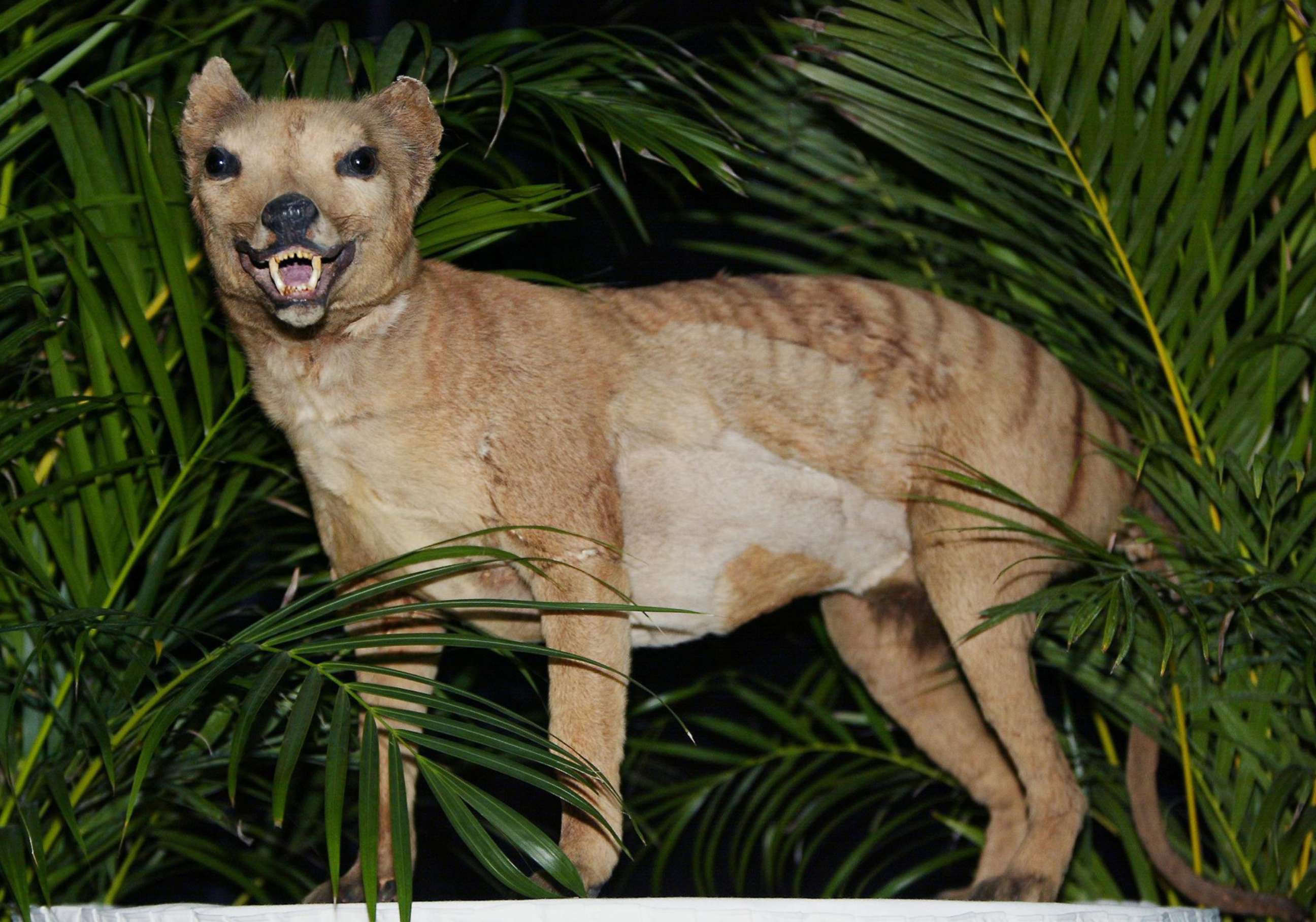
Tasmanian tiger
The re-discovery of the Tasmanian tiger, a large carnivorous marsupial thought to be extinct since 1936, is shrouded in a cloud of mystery and largely reported by civilians.
Sightings of the animal were actually first documented in September 2016, but the number of sightings began to ramp up in 2018 and 2019, according to records released this year by the Department of Primary Industries, Parks, Water and Environment in Tasmania.
In July, a man who reported seeing a footprint on Sleeping Beauty mountain stated that he believed the print belonged to a Tasmanian tiger after he went home and googled photos of it.
In November 2018, a woman reported seeing what she believed to be a Tasmanian tiger and two cubs at the Hartz Mountains National Park, and two people reported seeing the animal after it walked out in front of them while driving in Corinna, describing it as bigger than a fox but smaller than a German shepherd with stripes down its back.
Four other sightings were reported between February 2016 and February 2018. A man also reported in August that he believes he saw a thylacine on his land about seven years ago.
The Tasmanian tiger was presumed to be extinct after the last captive animal died in 1936 at the Hobart Zoo in Tasmania.It is characterized by its yellowish, brown fur and stripes along its back and as the face of a fox.
The IUCN Red List still has the species listed as extinct.
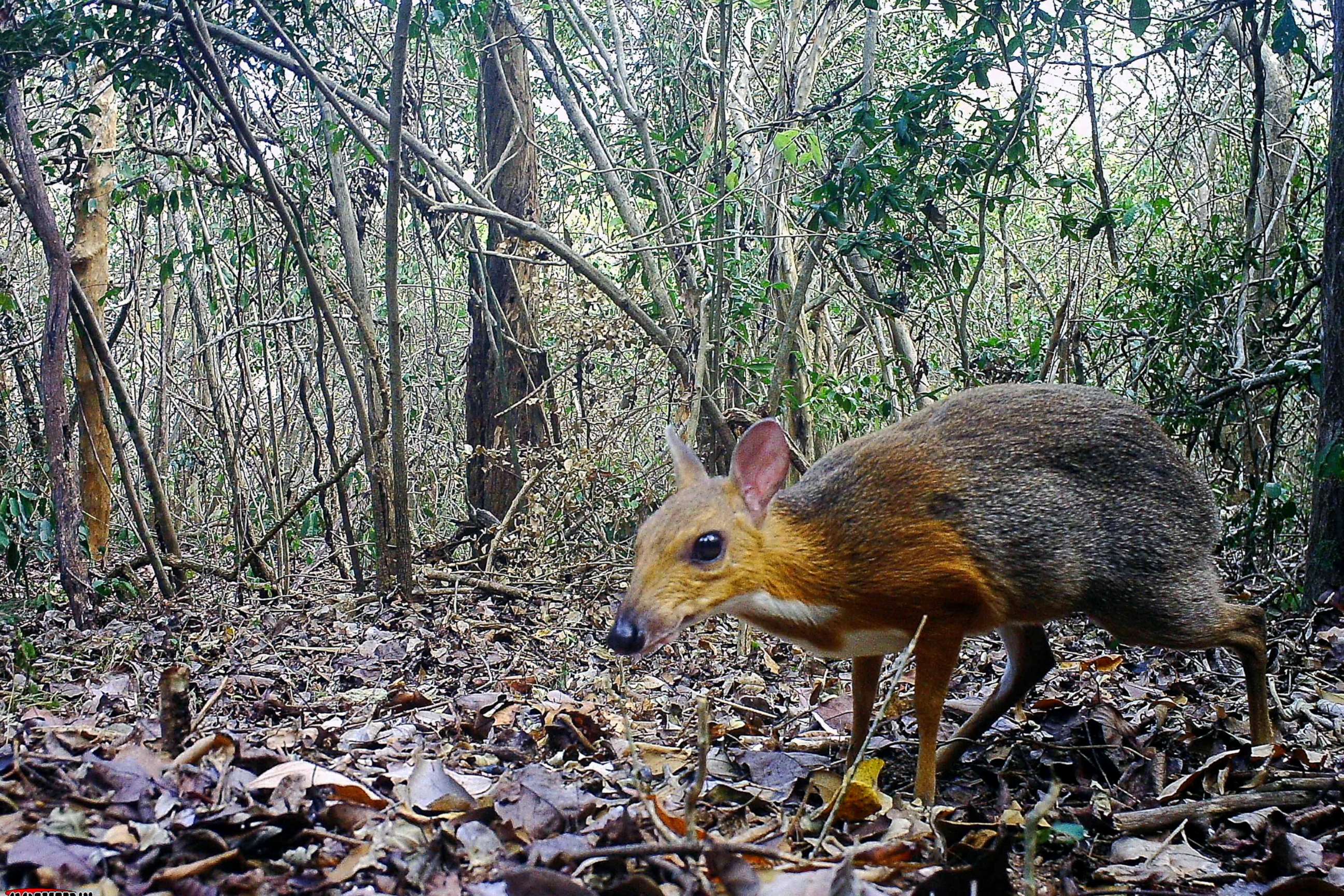
Silver-backed chevrotain
The Global Wildlife Conservation announced in November that a deer-like species the size of a rabbit, the silver-backed chevrotain, was photographed in southern Vietnam more than 25 years after it was last recorded.
The Vietnamese mouse-deer, which is the world's smallest ungulate, or hoofed animal, was "lost" to science since 1990. Researchers set up camera traps after interviewing several local villagers and government forest rangers who reported seeing the elusive animal.
There are 10 known species of chevrotain in the world, but the silver-back is distinguished by its silver sheen.
The IUCN's Red List did not categorize the species due to "deficient" data but states that the population trend is decreasing.
This report was featured in the Monday, Dec. 30, 2019, episode of ABC News' "Start Here" podcast:




